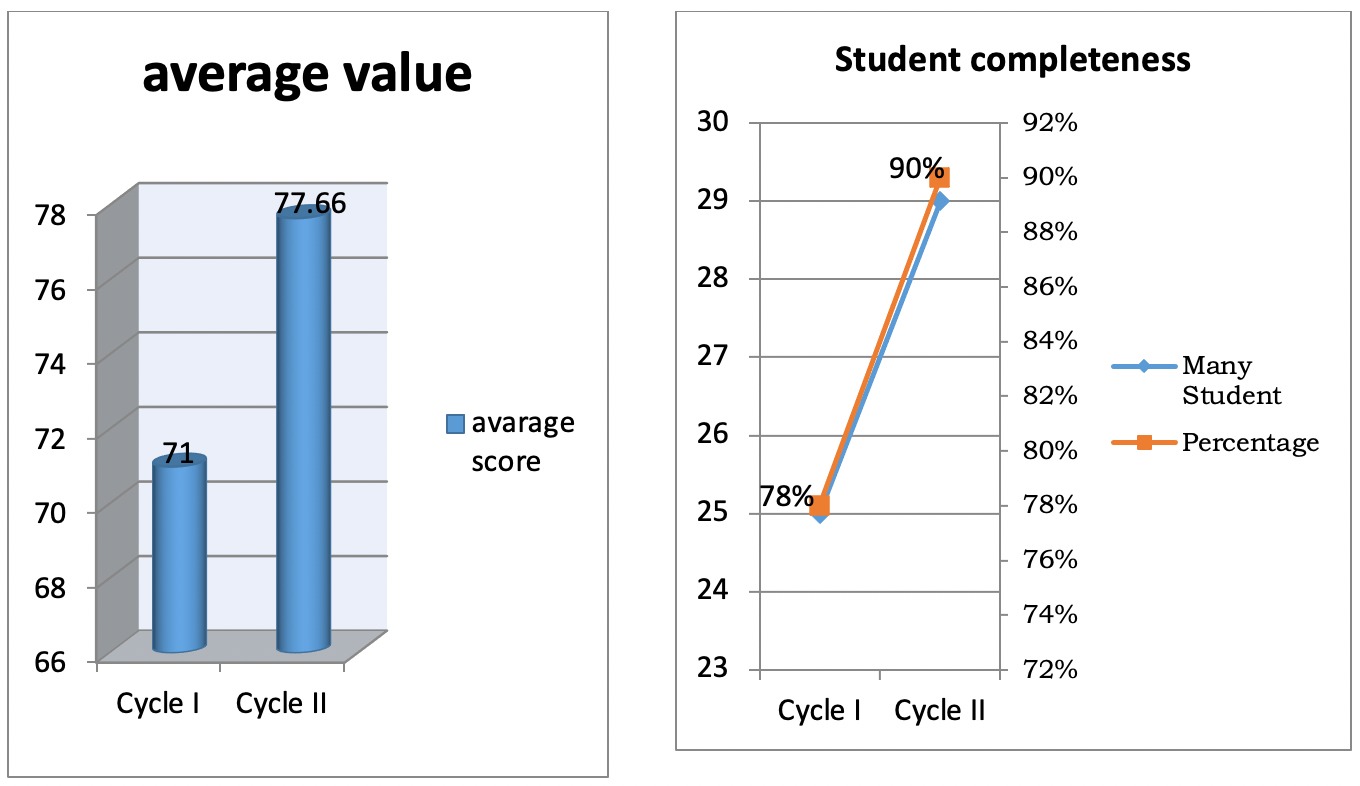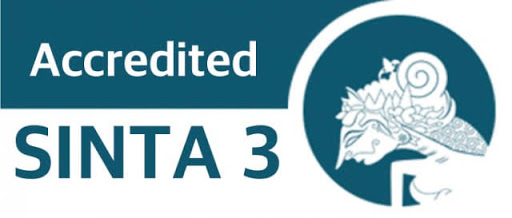Improving 8th-grade students’ problem-solving skills and self-efficacy in probability using discovery learning
DOI:
https://doi.org/10.12928/ijei.v3i2.6337Keywords:
discovery learning, problem-solving, self-efficacyAbstract
This study aims to improve students' problem-solving skills and self-efficacy with the discovery learning model on the probability material for grade of VIII SMP. This type of research is classroom action research which is carried out in two cycles, with each cycle consisting of planning, action, observation and reflection stages. The subjects of this research were 32 students from grades of VIII. Data collection was used using questionnaires, observation and test techniques. Research data were analyzed through data reduction, data presentation and conclusion. Based on the study's results, it is known that implementing the discovery learning model can improve students' problem-solving skills and self-efficacy. This can be seen from the increase in the average score of students in the first cycle, which is 71 to 76.66 in the second cycle. The percentage of completeness in the first cycle also increased from 78% to 90% in the second cycle. This increase was also accompanied by an improved student self-efficacy from the percentage of 43.75% of students with high minimum criteria in cycle 1 to 66% in cycle II.
References
Amir, M. F. (2015). Pengaruh Pembelajaran Konsektual terhadap Kemampuan Pemecahan Masalah Matematika Siswa Sekolah Dasar. Prosiding Seminar Nasional Pendidikan: Tema “Peningkatan Kualitas Peserta Didik Melalui Implementasi Pembelajaran Abad 21,” 2011, 34–42.
Andriyani, A., Santosa, A. B., & Saryadi, W. (2022). Effectiveness of Microsoft Kaizala and Google Classroom towards students' mathematical communication skills and self-efficacy in learning statistics. Bulletin of Applied Mathematics and Mathematics Education, 2(1), 33–46. https://doi.org/10.12928/bamme.v2i1.5523
Arohman, B., Mustamin, A., & Zamsir. (2020). Pengaruh Model Discovery Learning Terhadap Kemampuan Penalaran Matematis Siswa Kelas VII SMP Negeri 15 Kendari. Jurnal Penelitian Pendidikan Matematika, 8(1), 1–14. https://doi.org/10.36709/jppm.v8i1.11222
Haryani, D. (2011). Pembelajaran Matematika dengan pemecahan masalah untuk menumbuhkembangkan kemampuan berpikir kritis siswa. Prosiding Seminar Nasional Penelitian, Pendidikan Dan Penerapan MIPA, Fakultas MIPA, Universitas Negeri Yogyakarta, 14(1), 20–29.
Islamiati, N., Lapele, D. ., & Sari, B. . (2021). Kemampuan Pemecahan Masalah Matematika Ditinjau dari Disposisi Matematis pada Penerapan Model Pembelajaran Group Investigation ( GI ) Mathematical Problem Solving Ability in terms of Mathematical Disposition on the Application of Group Investigation ( GI. Edumatika: Jurnal Pendidikan Matematika, 10(02), 29–37. https://online-journal.unja.ac.id/edumatica/article/view/12205/11707
Jatisunda, M. G. (2017). Hubungan Self-Efficacy Siswa SMP dengan Kemampuan Pemecahan Masalah Matematis. Jurnal Theorems (The Original Research of Mathematics), 1(2), 24–30.
Kartika, D. M. R., Sunarno, & Fatmawati. (2022). Mahasiswa Teknik Sipil Di Indonesia Menghadapi. Jurnal Matematika Dan Aplikasinya (IJMA), 2(2), 51–65.
Kurniawati, I., Raharjo, T. J., & Khumaedi. (2019). Peningkatan Kemampuan Pemecahan Masalah untuk Mempersiapkan Generasi Unggul Menghadapi Tantangan Abad 21. Seminar Nasinal Pascasarjana, 21(2), 702.
Marhaeni, N. H., Andriyani, & Rusmilah. (2021). Efektivitas LKPD berbasis Problem Based Learning untuk meningkatkan kemampuan pemecahan masalah matematis siswa SMA Negeri 1 Imogiri. Jurnal Pendidikan Surya Edukasi (JPSE), 7(2), 85–96.
Mariani, S. (2019). Pendalaman Mater Matematika Modul 4 Kombinatorika dan Statistika.
Maulyda, M. A. (2020). Paradigma Pembelajaran Matematika Berbasis Nctm. In Humanika, Kajian Ilmiah Mata Kuliah Umum (1st ed., Vol. 21, Issue January). email:buku.irdh@gmail.com
Nahdi, D. S. (2018). Eksperimentasi Model Problem Based Learning Dan Model Guided Discovery Learning Terhadap Kemampuan Pemecahan Masalah Matematis Ditinjau Dari Self Efficacy Siswa. Jurnal Cakrawala Pendas, 4(1), 50–56.
Nur Hayati, T., & Khotimah, R. P. (2017). Peningkatan Kemampuan Pemecahan Masalah Dan Hasil Belajar Matematika Siswa Melalui Model Pembelajaran Problem Posing. Prosiding Seminar Nasional Pendidikan Matematika, 1–9.
Nurhasanah, D. E., Kania, N., & Sunendar, A. (2018). Penggunaan Model Pembelajaran Discovery Learning untuk Meningkatkan Kemampuan Pemecahan Masalah pada Siswa SMP. Didactical Mathematics, 1(1), 21–33. https://doi.org/10.31949/dmj.v1i1.1113
Nurjani. (2019). Urgensi Model Discovery Learning Bagi Peserta Didik dalam Beradaptasi Diera Society 5.0. International Conference on Education, 189–196.
Putrayasa, I. M., Syahruddin, H., & Margunayasa, I. G. (2014). Pengaruh Model Pembelajaran Discovery Learning. Jurnal Mimbar PGSD Universitas Pendidikan Ganesha, 2(1).
Rambe, A. Y. F., & Afri, L. D. (2020). Analisis Kemampuan Pemecahan Masalah Matematis Siswa Dalam Menyelesaikan Soal Materi Barisan Dan Deret. AXIOM : Jurnal Pendidikan Dan Matematika, 9(2), 175. https://doi.org/10.30821/axiom.v9i2.8069
Rosarina, G., Sudin, A., & Sujana, A. (2016). Penerapan Model Discovery Learning Untuk Meningkatkan Hasil Belajar Siswa Kelas Ix Pada Pembelajaran Ipa. BIO EDUCATIO : (The Journal of Science and Biology Education), 1(1), 371–380. https://doi.org/10.31949/be.v5i2.2597
Septantiningtyas M.Pd, N., Dhofir, M., & Maghfirah, W. (2020). PTK (Penelitian Tindakan Kelas) (A. sanjaya, M. R. L. Hakim, & A. N. M. Sulaiman (eds.); 1st ed.). Penerbit Lakeisha.
Septikasari, R., & Frasandy, R. (2018). Keterampilan 4C Abad 21 Dalam Pembelajaran Pendidikan Dasar. Jurnal Tarbiyah Al Awlad, VIII, 107–117.
Usmaedi. (2021). Education Curriculum For Society 5.0 In The Next Decade. Jurnal Pendidikan Dasar Setiabudhi, 2(3), 63–79.
Yarmayani, A. (2016). Analisis Kemampuan Pemecahan Masalah Matematis Siswa Kelas Xi Mipa Sma Negeri 1 Kota Jambi. Jurnal Ilmiah Dikdaya, 6(2), 12–19.
Yuszahra, R., Maryani, & Bambang Supriadi. (2018). Model Discovery Learning Dengan Media E-Learning Pada Pembelajaran Fisika Saat Covid-19 Di Sma. Angewandte Chemie International Edition, 6(11), 951–952., 5(1), 33–39.

Downloads
Published
Issue
Section
License
Copyright (c) 2022 Wa Ode Hartiana, Andriyani

This work is licensed under a Creative Commons Attribution-ShareAlike 4.0 International License.
Authors who publish with this journal agree to the following terms:
- Authors retain copyright with the work simultaneously licensed under a Creative Commons Attribution License that allows others to share the work with an acknowledgement of the work's authorship and initial publication in this journal.
- Authors are able to enter into separate, additional contractual arrangements for the non-exclusive distribution of the journal's published version of the work (e.g., post it to an institutional repository or publish it in a book), with an acknowledgement of its initial publication in this journal.
- Authors are permitted and encouraged to post their work online (e.g., in institutional repositories or on their website) prior to and during the submission process, as it can lead to productive exchanges, as well as earlier and greater citation of published work (See The Effect of Open Access).




